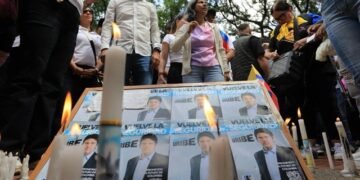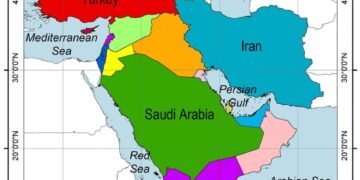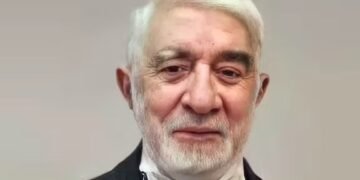Reactions to Parasto Ahmadi’s Singing Without Mandatory Hijab: Iran’s Judiciary Announces Legal Action
The release of a video featuring Parasto Ahmadi, an Iranian singer and composer, performing music without a mandatory hijab in one of Iran’s historic caravanserais has sparked widespread reactions on social media and compelled Iran’s judiciary to respond.
Mizan News Agency, affiliated with the judiciary, announced on Thursday that a legal case had been filed against the singer and those involved in producing the video. The agency stated, “A video titled ‘Imaginary Concert’ has been circulated on social media, in which a group performs a musical piece led by a woman who disregards legal and religious norms. This event had no legal authorization, and the country’s legal and cultural regulations were not observed.”
In this live performance, broadcast on Ahmadi’s YouTube channel on Wednesday night, she appeared on stage with optional attire. This act, seen as a direct challenge to Iran’s mandatory hijab laws, drew widespread support and criticism on social media.
Artistic Excellence in Parasto Ahmadi’s Group Performance
From a musical perspective, the performance showcased exceptional precision and mastery. The arrangement, the harmony of the instruments, and the coordination among the group demonstrated the musicians’ high skill level and Parasto Ahmadi’s remarkable vocal prowess. Her performance radiated energy and established a strong connection with the audience, leaving a significant cultural impact despite the constraints.
Her flawless vocal techniques and deep emotional expression, coupled with the superior quality of the instrumental accompaniment, made this concert a standout artistic achievement. Many social media users praised the high quality of the performance, calling it a landmark piece of art that symbolizes resistance against restrictions.
Key Questions: Was This Action Beneficial for the People or the Government?
One of the pivotal aspects of this event is its timing. Some analysts argue that this move could be seen as a response to growing social protests against restrictive hijab laws and a reflection of civil demands by the Iranian people. In recent months, widespread protests against social restrictions and the government’s cultural repression have intensified.
On the other hand, some analysts suggest that this action might be part of a government strategy. They believe such events can be deliberately orchestrated to distract public attention from major issues like the economic crisis, rampant inflation, the devaluation of the national currency, and international pressures. According to this analysis, controversies surrounding a concert could divert media and public focus from fundamental crises to secondary topics.
The Scenario of Diverting Public Attention
Analysts, citing the fall of Bashar al-Assad and Iran’s declining regional influence, believe that the regime might be grappling with internal and external crises. In such circumstances, occurrences like this could serve as tools for redirecting public opinion and reducing social pressure.
Display of Judiciary Power
The judiciary’s swift response to this incident, including filing legal cases against those involved, underscores the regime’s sensitivity to any cultural or social challenges. This reaction sends a clear message to other artists and cultural activists that crossing government-defined cultural and religious red lines will face serious consequences.
Responding to Public Demands
Conversely, evidence suggests that the concert was independently organized as a form of protest against cultural restrictions and strict hijab laws. The widespread public support for this act on social media reflects a growing desire for societal changes.
Support or Suppression: Public and Government Reactions
This event has polarized opinions. Many social media users viewed it as a bold act of cultural resistance against repression, while the government, through legal actions, demonstrated its ongoing commitment to strict cultural control.
Nonetheless, such actions once again highlight the role of art as a powerful tool for social change, despite the significant risks artists and cultural activists face.
Conclusion
While a more precise analysis requires further insight into the background of this event, it seems that Parasto Ahmadi’s hijab-free performance aligns with public demands for greater personal freedoms. At the same time, the possibility that the government leveraged this event to showcase its power or divert public attention cannot be entirely dismissed. Domestic and international pressures, including post-Assad regional challenges and ongoing protests, have compelled Iran’s regime to swiftly respond to such incidents while potentially exploiting them for crisis management.
Meanwhile, from an artistic standpoint, this concert demonstrated that art, even under restrictive conditions, can serve as a powerful medium for protest and fostering social solidarity. The exceptional quality of this performance proves that art can transcend imposed limitations and deliver a profound message of change.

 English
English








































